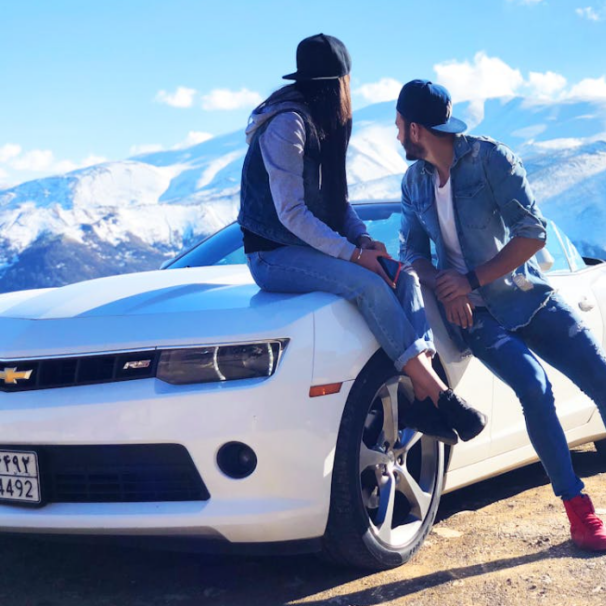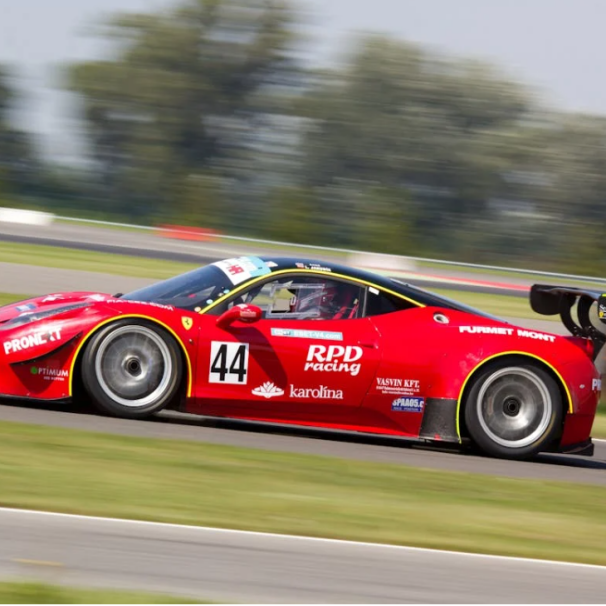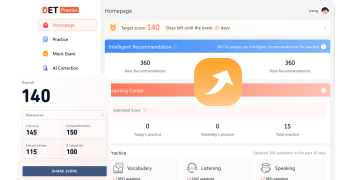DET Parlez de la photo 2 - Modèle et stratégies pour répondre aux questions sur les types de transport
Bienvenue de retour à la DETParler de la photo - Série de modèles! Dans notrearticle précédent, nous avons exploré des stratégies et des modèles pour répondre à des questions sur des portraits de personnes.Dans cet article de blog, nous nous concentrons sur des stratégies et des modèles spécifiquement adaptés aux questions liées au transport, aidant les candidats à s'entraîner plus efficacement.
Stratégies pourAnswering TransportationTypeQuestions: Six-StepMéthode
La description des sujets liés au transport peut être divisée en six étapes. Prenons la photo suivante comme exemple.

1. Décrivez l'Arrière-plan de la Scène :
Commencez par observer et décrire l'environnement global de l'image, y compris l'heure de la journée (jour ou nuit), les conditions météorologiques (claires ou nuageuses), et l'emplacement (rue de la ville, route rurale, ou parking).
Example Sentence: The image features two young individuals standing next to a white Chevrolet car in an expansive outdoor area near snow-capped mountains, under a clear blue sky. The sun shines brightly, casting a warm glow over the scene, while a gentle breeze adds to the refreshing atmosphere.
2. Identifier et Décrire les Véhicules:
Identifier les véhicules principaux dans l'image et décrire leurs types.
Example Sentence: The centerpiece of the scene is a sleek white Chevrolet, its glossy finish reflecting the sunlight and harmonizing beautifully with the natural surroundings.
3. Détaillez les caractéristiques du véhicule :
Fournissez une description plus détaillée de chaque véhicule, y compris sa couleur, sa marque et toutes ses caractéristiques uniques.
Exemple de phrase :This white Chevrolet boasts a modern design, characterized by smooth curves and stylish alloy wheels, giving it a youthful.
4. Décrivez l'état et la position du véhicule :
Indiquez si les véhicules sont stationnés, en mouvement ou dans un autre état, ainsi que leurs positions dans la scène.
Example Sentence: The Chevrolet is parked in a casual position, providing an ideal spot for the two young people to engage in conversation. The woman sits comfortably on the car's roof while the man half-squats beside it, both fully engrossed in their discussion.
5. Mentionner l'Interaction des Personnes ou des Animaux :
S'il y a des personnes ou des animaux interagissant avec les véhicules ou présents dans l'image, décrivez leurs positions et actions.
Example Sentence: The two young people appear to be enjoying a lively conversation, dressed in casual clothes and wearing hats. The woman playfully sits atop the car, while the man leans in, animatedly sharing stories and laughter, showcasing a strong bond between them.
6. Résumer la Description :
Enfin, résumez les caractéristiques clés des véhicules et de la scène, en soulignant tout détail particulièrement notable.
Example Sentence: Overall, the scene radiates a relaxed and joyful atmosphere, with the interaction between the two young friends brimming with youthful energy and sincere emotional connection. The majestic snow-capped mountains in the background add a sense of tranquility and grandeur, beautifully illustrating the harmony and beauty of nature surrounding them as they relish this moment together.
LeAnswerTemplate pour Transportation Questions
Note spéciale: Dans les phrases modèles, il y aura deux couleurs de texte. Le noir représente les phrases fixes, tandis que le bleu indique les phrases flexibles.
1. The [vehicle] in the photo features a [adjective] [interior or exterior design], including [design element 1] and [design element 2], which [effect on the overall appearance or comfort].
2. The [vehicle] in the photo is set against a [adjective] [background or setting], with [feature or effect 1] and [feature or effect 2], creating a[adjective] atmosphere for the [vehicle].
3. The picture highlights a [adjective] [technological feature or innovation], with [feature or innovation 1] and [feature or innovation 2], providing a [adjective] driving experience in the [vehicle].
4. In the image, the [vehicle] is characterized by its [adjective] [performance or capability], such as [specific performance or capability], which [effect on the driving experience or functionality].

Exemple: The image showcases a racing car speeding on the track. The vehicle in the photo features a sleek exterior design, including an aerodynamic body kit and a prominent rear wing, which enhances its overall speed and performance. The car is vividly painted in red, adorned with the number "44" and various sponsor logos, such as "PRONET," "RPD Racing." The vehicle in the photo is set against a dynamic blurred background, with surrounding scenery appearing slightly distorted, creating a thrilling atmosphere for the racer. This effect emphasizes the car's incredible velocity, making it seem as though it is cutting through the air. The streamlined design not only increases downforce but also ensures greater stability at high speeds. In addition, the combination of high-tech features and bold aesthetics gives the car a commanding presence on the track. Overall, the image conveys a thrilling racing experience filled with speed, excitement, and the spirit of competition.
Lorsque vous utilisez des modèles, vous pouvez les combiner de manière flexible pour rendre votre écriture plus fluide.
DÉT Parler de la photo 3 - Modèle et stratégies pour répondre aux questions de type artistique






